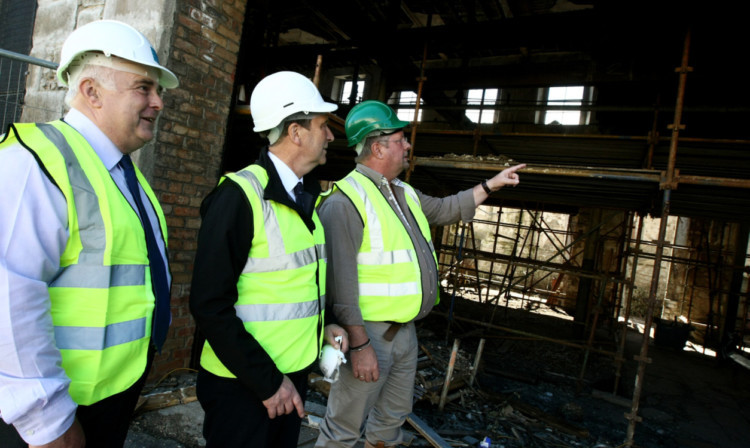Builders have begun to transform a crucial part of Dundee’s industrial heritage.
The £2.9 million project will see a disused and dilapidated part of the Verdant Works jute museum stripped of its wooden floors to reveal a cathedral-like space that will be used for viewing exhibits and staging events.
It will take almost a year to complete the restoration of the High Mill but when it is done it will double the size of the museum.
Built in 1833, Verdant Works is the last working jute mill in Scotland. Much of its machinery is more than a century old and it is the only place in Britain where visitors can see the processing of jute from the raw fibre through to the finished woven cloth.
At its peak the jute industry employed 50,000 people and had a dramatic effect on Dundee’s economy and society.
The museum seeks to preserve that history and operators Dundee Heritage Trust are hoping the addition of the High Mill will broaden its appeal.
Operations director Mark Munsie said: “Everyone involved with the trust is delighted that work has finally begun on site it is such a boost to the morale of our staff and volunteers who have seen the sorry state of the buildings in recent years.”
The main contract of £1.6 million has gone to local firm George Martin Builders and Mr Munsie said he expected this to prove a positive and productive relationship.
Having the extra space available will enable the museum to put more historic objects on display, including an 1801 Boulton & Watt steam engine, and offer new opportunities for learning and community involvement.
It will also allow the museum to cover new themes including engineering, power and mill architecture.
The project has been made possible by a £1.9m grant from the Heritage Lottery Fund, whose spokesman Colin McLean said: “Today marks a turning point for Verdant Works.
“Incorporating these last two buildings into the existing five-star visitor attraction will complete its transformation with a stunning new space for exhibits and museum events.”
The High Mill is category A listed and it was important that a specialist architect be appointed to oversee the works. The job is being done by Doug Reid, from Glamis-based James F Stephen architects, who is experienced in restoring industrial buildings including textile mills.
Historic Scotland has given a grant of £500,000 and one of its architects will liaise with the design team throughout the construction phase.
The rough industrial character of the buildings will be retained, meaning original features and finishes, even down to old light switches and rusty doors, will not be replaced.
Historic Scotland’s head of investment Martin Fairley said: “We are delighted that Verdant Works will be restored to its former glory and hope that many people, from Scotland and further afield, take advantage of the opportunity to visit and learn about Scotland’s textile heritage.”
